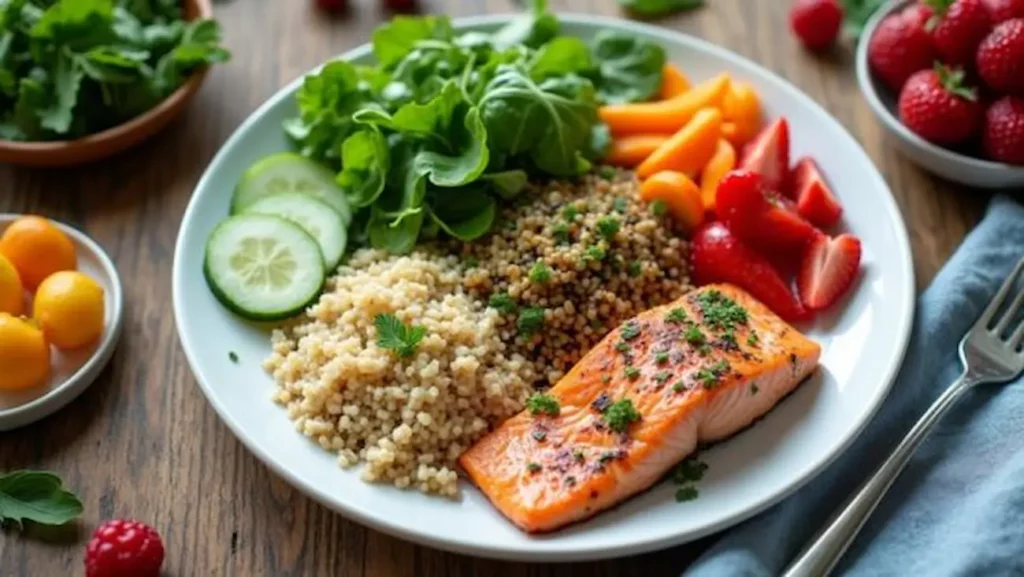
What are the weight loss injections side effects?
Many weight loss injections promise quick results, but their side effects may surprise you and affect more than just your waistline. Discover the truth.


Building a healthy plate isn’t about strict rules—it’s about balance. With the right mix of foods, every meal can fuel energy, support strength, and keep you feeling your best.

The secret lies in how you fill your plate, and small shifts can make a big difference.
So, what does a truly balanced plate look like—and how can it transform your health? Let’s take a closer look.
Selecting appropriate portions is essential for creating a balanced and nutritious plate. Proper portion sizes help control calorie intake and ensure adequate nutrient distribution among food groups.
Emphasizing moderate servings of proteins, grains, and vegetables supports overall health. Using visual cues or measuring tools can assist in maintaining these portions, promoting mindful eating habits without overconsumption.
Although vegetables and fruits are often grouped together, incorporating a diverse range of both is key to maximizing nutritional benefits.
Different colors and types provide unique vitamins, minerals, and antioxidants. Including seasonal and locally available options enhances variety and freshness.
Emphasizing whole, minimally processed produce supports fiber intake, promotes overall health, and helps reduce the risk of chronic diseases.
When choosing grains and proteins, prioritizing whole grains and lean sources supports balanced nutrition and sustained energy.
Whole grains like brown rice, quinoa, and oats provide fiber and essential nutrients.
Lean proteins such as skinless poultry, fish, legumes, and low-fat dairy contribute to muscle maintenance without excess saturated fat.
These choices enhance nutrient density and promote overall health.
In addition to whole grains and lean proteins, incorporating healthy fats into meals contributes to a well-rounded diet.
Sources such as avocados, nuts, seeds, and olive oil provide essential fatty acids and fat-soluble vitamins.
These fats support brain function, hormone production, and nutrient absorption, enhancing overall health without excessive calorie intake when consumed in moderation.
Creating balanced and enjoyable meals requires thoughtful selection of ingredients that provide a variety of nutrients while appealing to the palate.
Incorporating colorful vegetables, lean proteins, whole grains, and healthy fats ensures nutritional diversity. Portion control and mindful seasoning enhance flavor without excess calories.
Experimenting with cooking methods and textures can maintain interest, making meals both satisfying and healthful.
Building a healthy plate involves thoughtful portioning and diverse food choices to promote overall well-being. Emphasizing half the plate with colorful vegetables and fruits ensures vital nutrients, while incorporating whole grains and lean proteins supports energy and muscle health. Including healthy fats enhances flavor and nutrient absorption. By balancing these components, individuals can create satisfying, nutritious meals that contribute to long-term health and enjoyment, reinforcing the importance of mindful eating habits.

Many weight loss injections promise quick results, but their side effects may surprise you and affect more than just your waistline. Discover the truth.

Achieve your weight loss goals with these 4 delicious smoothie recipes that boost metabolism and curb cravings—discover how tasty health can be.

Fast weight loss can lead to surprising side effects that affect your body and health in unexpected ways; discover what you need to know before starting.

Micronutrients and macronutrients matter immensely for health, but do you know how they differ and why both are essential? Discover the key facts inside.

It’s incredible how water impacts every part of your body—discover why drinking it daily is essential for your health and vitality.

Kiwis, kale, and other surprising foods pack both vitamin C and zinc—discover which four powerhouses boost immunity like you never knew.